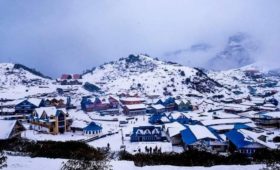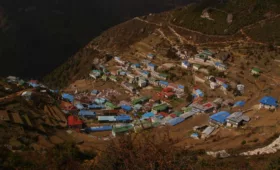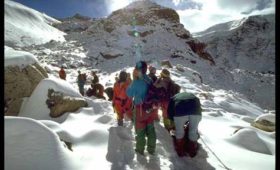Tibet, a land of ancient monasteries, breathtaking landscapes, and a rich cultural heritage, offers a unique and unforgettable trekking experience. Nestled in the heart of the Himalayas, Tibet’s mountains provide a stunning backdrop for adventurers seeking both physical and spiritual challenges.
Why Trek in Tibet?
- Breathtaking Scenery: Tibet boasts some of the world’s most stunning mountain vistas, including Mount Everest, the highest peak on Earth.
- Cultural Immersion: Explore ancient monasteries, interact with local Tibetan communities, and experience their unique culture.
- Off-the-Beaten-Path Adventures: Tibet offers a less-crowded and more authentic trekking experience compared to neighboring Nepal.
- Spiritual Significance: For many, trekking in Tibet is a pilgrimage to sacred sites and a journey of spiritual exploration.
Popular Trekking Routes in Tibet
- Everest Base Camp Trek: While primarily a Nepal-based trek, the Everest Base Camp can also be accessed from Tibet, offering a unique perspective on the world’s highest mountain.
- Kailash Parikrama: A sacred pilgrimage route that circumambulates Mount Kailash, considered holy in Hinduism, Buddhism, Bon, and Jainism.
- Yarlung Tsangpo Grand Canyon Trek: Explore the world’s deepest canyon, offering stunning scenery and opportunities for wildlife spotting.
- Amdo Trek: A remote and challenging trek through the Amdo region, offering breathtaking vistas and cultural immersion.
- Tsangpo Gorge Trek: This adventurous trek follows the Tsangpo River through the deepest gorge in the world.
Best Time to Trek in Tibet
The best time to trek in Tibet is during the spring (March-May) and autumn (September-November) seasons. These periods offer pleasant weather, clear skies, and fewer crowds.
Essential Gear for Your Trek
- Sturdy hiking boots
- Warm layers, including a down jacket
- Waterproof and windproof gear
- Trekking poles
- Sleeping bag
- Headlamp
- Sunglasses and sunscreen
- Water purification tablets or filter
Tips for a Successful Trek
- Obtain Necessary Permits: Permits are required for trekking in Tibet, and the process can be complex.
- Acclimatize Properly: Gradual ascent is crucial to prevent altitude sickness.
- Respect Local Culture: Dress modestly and be mindful of local customs.
- Leave No Trace: Minimize your impact on the environment by packing out your trash.
- Hire a Guide: A local guide can provide valuable insights into the culture, history, and natural beauty of Tibet.
Challenges and Rewards
Trekking in Tibet presents unique challenges, including:
- High Altitude: The region’s high altitude can cause altitude sickness. Acclimatize properly and be aware of symptoms.
- Remote Locations: Some treks take you to remote areas with limited facilities.
- Weather: Be prepared for unpredictable weather, including snow and strong winds.
However, the rewards of trekking in Tibet are immense:
- Breathtaking Scenery: Witness the majestic beauty of the Himalayas and Tibetan landscapes.
- Cultural Immersion: Experience the unique Tibetan culture, including ancient monasteries and traditional villages.
- Personal Achievement: Conquer challenging treks and push your limits.
- Spiritual Significance: For many, trekking in Tibet is a spiritual journey.
Tibet offers a truly unforgettable trekking experience, combining natural beauty, cultural richness, and spiritual exploration. With careful planning and preparation, you can embark on an adventure that will leave you with lasting memories.




